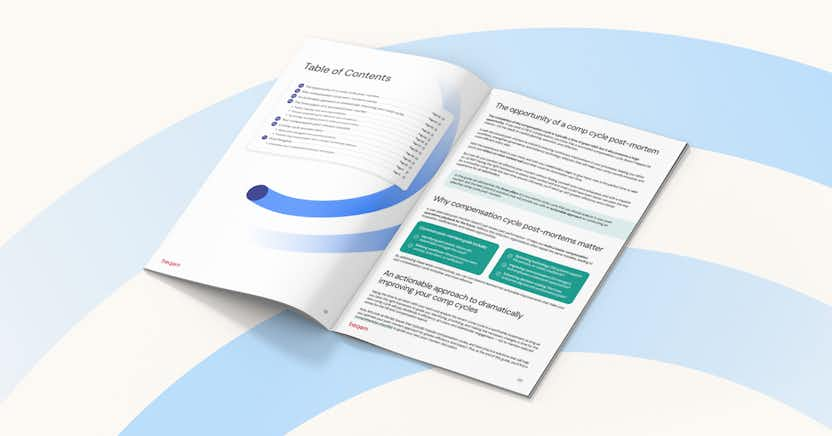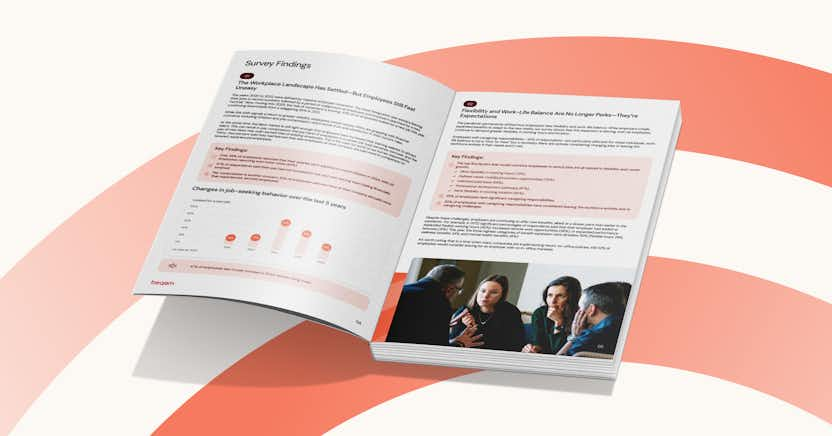Unlocking the Potential of Actionable Feedback: A Guide to Driving Performance and Growth

Organizations seeking to gain a competitive edge know that actionable feedback is vital—not just for driving performance, but for fostering employee engagement and a sense of belonging. By harnessing the power of timely and constructive feedback, organizations can unlock significant employee potential and drive performance to new heights.
In this blog, we will explore what actionable feedback entails, why it matters, and how to establish a feedback-friendly culture that boosts both individual and organizational growth.
The essence of actionable feedback
Defining actionable feedback
Actionable feedback refers to comments, suggestions, or critiques that provide employees with clear, specific information they can immediately apply to improve their performance. Instead of vague critiques or general praise, actionable feedback hones in on concrete areas for development or affirmation, giving employees a clear roadmap for progress.
Why actionable feedback matters
Actionable feedback not only improves individual performance but also boosts overall organizational success. Employees who receive constructive guidance are more engaged, motivated, and aligned with the company’s goals. Moreover, when employees understand the specific actions they need to take to improve, it helps build a culture of continuous learning and adaptability, both critical in today’s competitive business landscape.
Types of employee feedback
Employee feedback can take various forms, each serving a different purpose. Some common types include:
- Positive feedback to reinforce good behaviors or achievements.
- Constructive criticism that highlights areas for improvement.
- Developmental feedback aimed at long-term professional growth.
- Peer feedback which offers valuable insights from colleagues.
- Coaching from a manager to align on goal achievement.
Laying the groundwork for actionable feedback
Establishing a feedback-friendly culture
For actionable feedback to be effective, organizations need to create a culture where feedback is not only expected but embraced. Leaders should encourage open communication and make it clear that feedback—whether positive or constructive—is an essential part of professional development. This can be achieved by holding regular feedback sessions and fostering an environment of trust and transparency, and providing employees with the systems needed to support regular feedback.
Setting clear objectives and expectations
Actionable feedback thrives when employees understand what is expected of them. Organizations should set measurable goals that are both challenging and attainable, ensuring employees know how their performance aligns with broader company objectives. Clear objectives give context to feedback, making it easier for employees to take action.
Giving actionable feedback
Being specific and clear
Actionable feedback must be specific. Vague statements such as "do better next time" offer little guidance. Instead, feedback should detail exactly what the employee did well or needs to improve, such as, “Your last project presentation was well-researched, but could benefit from clearer visuals to support your main points.”
Ensuring relevance and timeliness
Feedback should be relevant to the employee’s role and given promptly. Timely feedback allows employees to adjust their actions while the task or behavior is still fresh. This immediacy makes the feedback more impactful and actionable.
Balancing positivity with constructive criticism
While it’s essential to highlight areas for improvement, balancing this with positive reinforcement can motivate employees to take action. A good rule of thumb is the “feedback sandwich” method: offer praise, deliver constructive criticism, and end with encouragement to keep morale high.
Delivering actionable feedback
Choosing the right medium
Whether it’s a face-to-face conversation, a written performance review, or a quick message via your company’s communication platform, the medium matters. Choose the method that best fits the nature of the feedback and the employee’s preferred communication style. Sensitive or complex feedback should ideally be delivered in person to ensure clarity and empathy.
Encouraging open communication
Feedback should be a two-way street. Encourage employees to ask questions, seek clarification, and provide their own insights on the feedback. This not only ensures understanding but also fosters a culture of collaboration and mutual respect.
Addressing concerns and offering support
When giving feedback, it’s important to address any concerns employees might have and offer support where needed. Constructive feedback can sometimes be challenging to hear, so it’s crucial to provide resources or mentoring to help employees act on the feedback effectively.
Receiving and acting on feedback
Embracing a growth mindset
For employees to truly benefit from feedback, they must adopt a growth mindset—a belief that skills and abilities can be developed through dedication and hard work. Encourage employees to view feedback not as criticism, but as an opportunity for growth and improvement.
Tracking progress and adjusting goals
Once feedback is given, it’s important to track progress and, if necessary, adjust goals. Regular check-ins and follow-up discussions ensure that employees remain on track and that their efforts are aligned with the company’s evolving needs.
Evaluating the impact of actionable feedback
Measuring employee engagement and performance
The effectiveness of actionable feedback can be gauged by tracking key metrics such as employee engagement, job satisfaction, and performance improvements. Organizations should regularly assess whether their feedback strategies are driving the desired outcomes.
Analyzing organizational growth and adaptability
Beyond individual performance, actionable feedback contributes to organizational growth. Companies that prioritize feedback are better equipped to adapt to market changes, innovate, and stay competitive. Feedback-driven cultures tend to be more agile and responsive to evolving industry demands.
Continuous improvement through actionable feedback
Building a cycle of feedback and improvement
Actionable feedback should not be a one-time event. It should be part of a continuous cycle where feedback is regularly given, acted upon, and followed up on. This helps employees constantly refine their skills, keeping them engaged and motivated.
Future-proofing your feedback processes
As workplace dynamics evolve, so should your feedback processes. Regularly revisiting and refining your feedback methods ensures they remain relevant and effective, future-proofing your organization’s ability to foster growth and adaptability.
By embedding actionable feedback into your company’s culture, you unlock the potential for both employee and organizational success. The power of clear, timely, and constructive feedback is unparalleled in driving performance, engagement, and long-term growth.
Ready to empower your workforce with effective feedback? Discover how beqom’s compensation and performance management solutions can help you build a thriving feedback culture that drives productivity and satisfaction across your organization. Contact us today to learn more!















